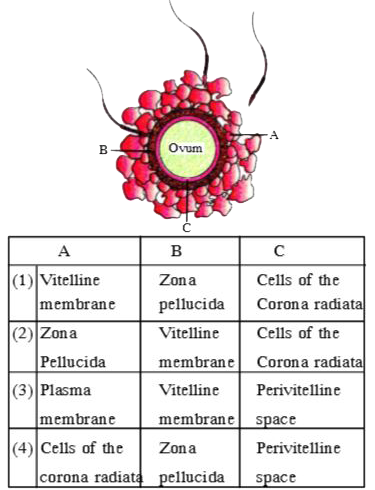Pollinator mutualism are special interactions involving …….A……, which receive food or a place to lay eggs and ……..B…….. , which receive pollen from other of their king
Choose of correct option for A and B
A-insects, B-plants
A-plants B-insects
A-prey,B-plants
A-predators,B-plants
The correct Answer is:A
To solve the question regarding pollinator mutualism, we need to identify the correct entities for A and B in the context of the mutualistic relationship described.
1. Understanding Pollinator Mutualism:
- Pollinator mutualism is a symbiotic relationship where two different species benefit from each other. In this case, we are looking for two specific groups: one that receives food or a place to lay eggs (A) and another that receives pollen (B).
2. Identifying A:
- The first part of the relationship (A) involves the organism that receives food or a place to lay eggs. In the context of pollination, this is typically insects. Insects such as bees, moths, and butterflies visit flowers to feed on nectar and, in the process, lay their eggs in suitable places.
3. Identifying B:
- The second part of the relationship (B) involves the organism that receives pollen. This is generally the plants. Flowering plants produce pollen that is transferred by insects during their visit for nectar, facilitating reproduction.
4. Finalizing the Answer:
- Therefore, the correct options are:
- A: Insects (which receive food or a place to lay eggs)
- B: Plants (which receive pollen from other plants).
Conclusion:
The correct answer is:
- A: Insects
- B: Plants
- Pollinator mutualism is a symbiotic relationship where two different species benefit from each other. In this case, we are looking for two specific groups: one that receives food or a place to lay eggs (A) and another that receives pollen (B).
- The first part of the relationship (A) involves the organism that receives food or a place to lay eggs. In the context of pollination, this is typically insects. Insects such as bees, moths, and butterflies visit flowers to feed on nectar and, in the process, lay their eggs in suitable places.
- The second part of the relationship (B) involves the organism that receives pollen. This is generally the plants. Flowering plants produce pollen that is transferred by insects during their visit for nectar, facilitating reproduction.
- Therefore, the correct options are:
- A: Insects (which receive food or a place to lay eggs)
- B: Plants (which receive pollen from other plants).
The correct answer is:
- A: Insects
- B: Plants
Similar Questions
Knowledge Check
Pollinator mutualism are special interactions involving __________, which receive food or a place to lay eggs, and ___________ which receive pollen from others of their kind.
Ainsects, plantsBplants, insectsCparasites, plantsDpredators, plantsThe organism which tolerate wide range of salinity called …….A ……..
II. The organism which tolerate narrow range of salinity called ……….B………..
Choose the correct option for A and BAA -stenohaline , B-euryhalineBA-euryhaline, B-stenohalineCA-isohaline , B-euryhalineDA-heterohaline, B-isohalineThe hepatic portal vein carries blood from A to B before it is delivered to systemic circulation. Choose the option which gives the correct description for A and B ?
ALiver (A) Intestine (B)BIntstine (A) Liver (B)CLiver (A) Heart (B)DIntestine (A) Heart (B)
After ovulation, the ruptured follice is converted to a structure called .. (A)... which secretes mainly .. (B)... Choose the correct option for A and B.

View SolutionIt is a digramatic presenation of ovum which surrounded by few sperms, choose the correct option about A, B, and C :-

View SolutionWhich of the following statements is not correct ? Choose the correct options from the given below.
View SolutionWhich of the following statements is not correct ? Choose the correct options from the given below.
View SolutionA man is running with a constant acceleration on a plank which is placed on a horizontal smooth surface. Then choose the correct option(s):
View Solution


